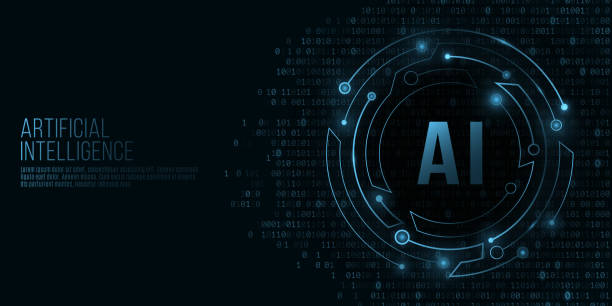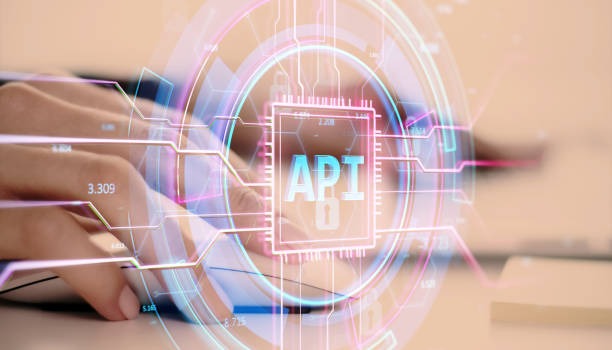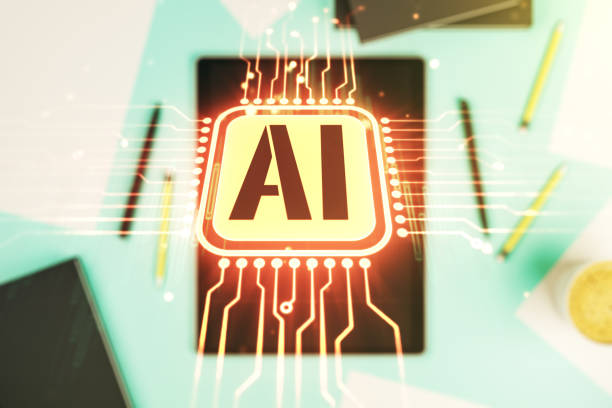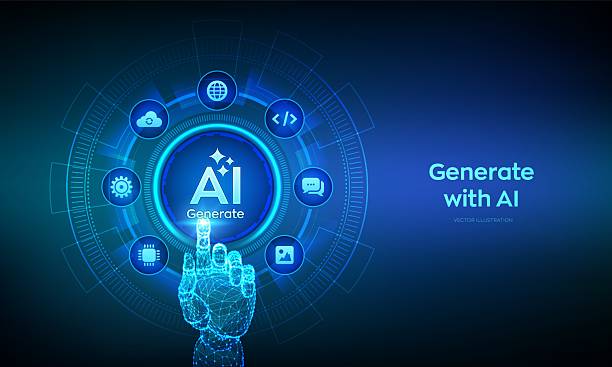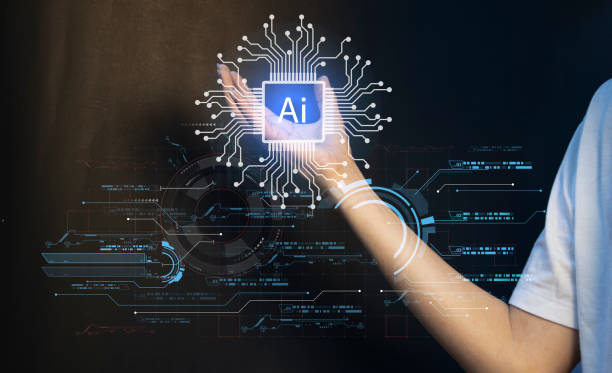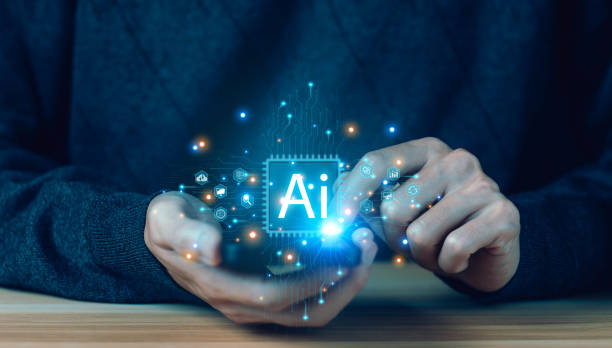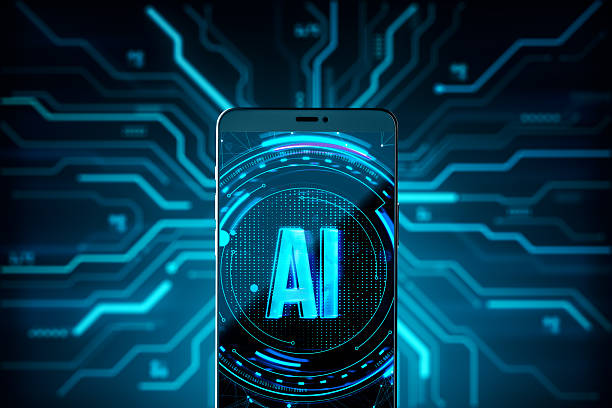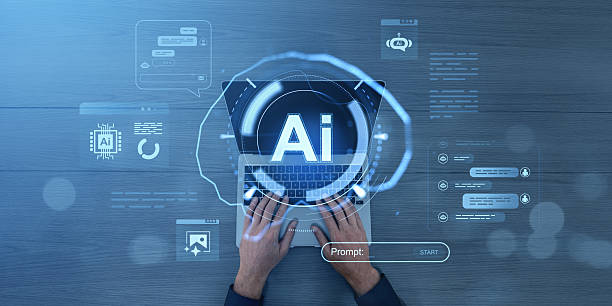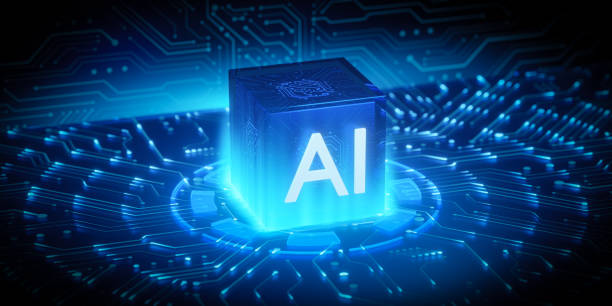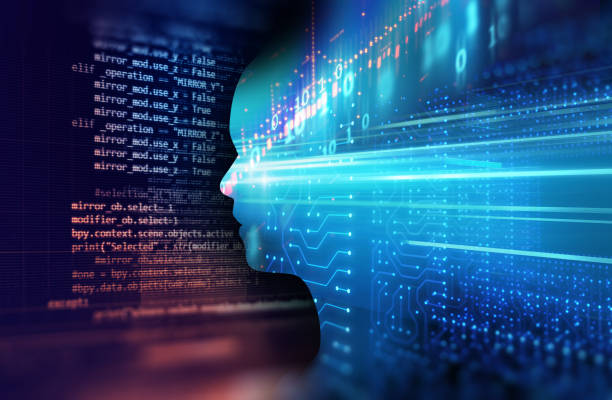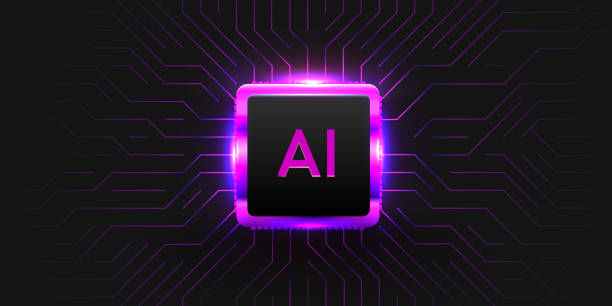What is Artificial Intelligence? Definition, History, and Basic Concepts
#ArtificialIntelligence (AI) is a branch of computer science that deals with building machines capable of performing tasks that typically require human intelligence.
These tasks include learning, reasoning, problem-solving, understanding natural language, and seeing.
Artificial intelligence has been of interest for decades and has had an eventful history.
From the first attempts to build thinking machines in the 1950s to today’s remarkable advances, this field has been constantly evolving.
Basic concepts of artificial intelligence include algorithms, neural networks, machine learning [Machine Learning] and deep learning.
Understanding these concepts is essential to entering the world of artificial intelligence.
In simple terms, artificial intelligence is an effort to simulate human thought processes in machines.
This includes the ability to learn from data, identify patterns, make decisions based on available information, and solve complex problems.
Artificial intelligence is no longer an abstract concept, but has become an integral part of our daily lives.
Are you tired of your online store having visitors but no sales? Rasaweb solves your main problem with professional online store design!
✅ Significant increase in sales with targeted design
✅ Flawless user experience for your customers
⚡ Get a free consultation!
Types of Artificial Intelligence: A Detailed Look at Categories
Artificial intelligence can be divided into different categories based on its abilities and efficiencies.
One of the most common classifications is dividing artificial intelligence into Narrow AI and General AI.
Weak AI is designed to perform specific tasks and performs very well in that field.
Examples include movie and music recommendation systems, voice assistants like Siri and Alexa, and facial recognition systems.
In contrast, strong AI is intelligence that can perform any task that a human can.
Strong AI remains a theoretical concept and has not yet become a reality.
Click here to preview your posts with PRO themes ››
There is also another categorization that divides artificial intelligence into four categories based on how they learn and function: 1-Reactive machines 2-Machines with limited memory 3-Theory of Mind 4-Self-awareness.
Reactive AI is the simplest type of AI and only reacts based on current inputs.
AI with limited memory can store limited information and use it for decision-making.
AI with a theory of mind is able to understand the emotions and motivations of others.
Self-aware AI has self-awareness and can think about itself.
Recognizing the types of artificial intelligence helps us to better understand the applications and limitations of each.
Applications of Artificial Intelligence in Today’s World
Artificial intelligence is currently used in many fields and is increasingly expanding.
In the field of health and medicine, artificial intelligence is used to diagnose diseases, develop drugs, and provide personalized care.
In the automotive industry, artificial intelligence is used to develop self-driving cars.
In the financial sector, artificial intelligence is used to detect fraud, manage risk, and provide financial services to customers.
In the field of education, artificial intelligence is used to provide personalized education and evaluate student performance.
These are just a few examples of the applications of artificial intelligence.
With the advancement of technology, it is expected that the applications of artificial intelligence will increase significantly in the near future.
For example, in the marketing sector, artificial intelligence can be used to analyze customer behavior, predict their needs, and deliver targeted advertising.
In the manufacturing sector, artificial intelligence can be used to optimize production processes, reduce costs and increase product quality.
In agriculture, artificial intelligence can be used to manage farms, predict crop performance, and reduce water and fertilizer consumption.
| Area | Application of Artificial Intelligence |
|---|---|
| Healthcare | Disease diagnosis, drug development |
| Automotive | Self-driving cars |
| Finance | Fraud detection, risk management |
| Education | Personalized education |
Machine Learning and Deep Learning; Two Fundamental Pillars of Artificial Intelligence
Machine Learning and Deep Learning are two important sub-branches of artificial intelligence.
Machine learning allows machines to learn from data without explicit programming.
In fact, instead of instructing machines how to perform a task, they are given data and learn how to identify patterns in the data and use them for prediction or decision making.
[Machine learning] includes various algorithms such as regression, classification, clustering, and dimensionality reduction.
Deep learning is a subset of machine learning that uses deep artificial neural networks to learn from data.
Artificial neural networks are inspired by the structure of the human brain and consist of many layers of interconnected nodes.
Each layer of nodes extracts different features from the data, and these features are passed to the next layers until a prediction or decision is finally made.
Deep learning has achieved very good results in areas such as image recognition, natural language processing and machine translation.
In short, machine learning allows machines to learn from data, while deep learning uses deep neural networks to learn complex patterns in data.
Did you know that 94% of users’ first impressions of a business are related to its website design? With professional corporate website design by **Rasaweb**, turn this initial impression into an opportunity for growth.
✅ Attract more customers and increase sales
✅ Create credibility and trust in the eyes of the audience⚡ Get a free website design consultation!
Challenges and Limitations of Artificial Intelligence
Despite remarkable advances, artificial intelligence still faces challenges and limitations.
One of the most important challenges is the need for large and high-quality data.
Artificial intelligence algorithms need a huge amount of data to learn and function correctly.
If the data is insufficient, inappropriate, or biased, the performance of artificial intelligence is affected.
Another challenge is interpretability and explainability.
Many artificial intelligence algorithms, especially deep neural networks, act as black boxes, and it is not easy to understand how they came to a particular decision.
This issue can be problematic in sensitive areas such as medicine and law.
In addition, ethical and social issues are also among the important challenges of artificial intelligence.
The use of artificial intelligence can lead to job losses, discrimination and inequality, privacy violations and misuse of personal information.
To address these challenges, there is a need to enact appropriate laws and regulations, as well as develop ethical and responsible artificial intelligence.
Finally, security is also an important challenge.
Artificial intelligence systems can be attacked and manipulated, which can lead to irreparable damage.
The Future of Artificial Intelligence: Predictions and Possibilities
The future of artificial intelligence looks very bright and promising.
With the advancement of technology, it is expected that artificial intelligence will penetrate more fields and transform our lives.
It is predicted that artificial intelligence will play a more important role in the near future in areas such as health and medicine, education, transportation, manufacturing and customer service.
Self-driving cars, intelligent personal assistants, surgical robots, and advanced disease detection systems are just a few examples of the potential applications of artificial intelligence in the future.
However, the future of artificial intelligence also comes with challenges and concerns.
As previously mentioned, ethical, social and security issues must be taken seriously.
In order to fully benefit from the advantages of artificial intelligence and avoid its risks, we need a comprehensive and responsible approach.
In general, the future of artificial intelligence depends on how it is developed and used.
If we can develop artificial intelligence ethically and responsibly, we can witness remarkable advances in various fields and provide a better life for everyone.
Artificial Intelligence Development Tools: Introduction and Review
To develop artificial intelligence applications, there are various tools and libraries that help developers easily implement and train their models.
Some of the most popular of these tools include TensorFlow, PyTorch, Keras, and Scikit-learn.
TensorFlow is an open-source library developed by Google and used to build and train machine learning and deep learning models.
PyTorch is another open-source library developed by Facebook and has attracted the attention of many developers due to its flexibility and ease of use.
Keras is a high-level user interface for TensorFlow and Theano that allows developers to quickly and easily build and train deep learning models.
Scikit-learn is a Python library that includes various machine learning algorithms such as regression, classification, and clustering and is used to solve machine learning problems.
In addition to these libraries, there are also cloud platforms for artificial intelligence development.
These platforms provide the facilities and resources necessary to train and deploy artificial intelligence models.
Google Cloud AI Platform, Amazon SageMaker, and Microsoft Azure Machine Learning are among these platforms.
Choosing the right tool for developing artificial intelligence depends on the developer’s needs and preferences.
| Tool | Description |
|---|---|
| TensorFlow | Google Open Source Library |
| PyTorch | Facebook Open Source Library |
| Keras | High-level user interface |
| Scikit-learn | Python library |
The Impact of Artificial Intelligence on Jobs and the Workforce
Artificial intelligence has a significant impact on jobs and the workforce.
On the one hand, artificial intelligence can lead to the automation of many tasks and activities, which can lead to job losses in some industries.
Jobs that are repetitive, routine, and rule-based are most at risk of automation.
On the other hand, artificial intelligence can also create new job opportunities.
The development, implementation, and maintenance of artificial intelligence systems require skilled professionals.
In addition, artificial intelligence can increase the productivity and efficiency of the workforce and help them do their jobs better and faster.
In order to fully benefit from the advantages of artificial intelligence and avoid its risks, we need to invest in education.
We must help people learn new skills that are needed for future jobs.
Also, we should think about creating stronger social support systems to support people who lose their jobs due to automation.
The impact of artificial intelligence on jobs and the workforce is a complex issue that needs careful consideration and attention.
We must strive to develop and use artificial intelligence in a way that benefits everyone.
Are you tired of your company’s website not being seen as it should be and losing potential customers? Solve this problem forever with professional and effective website design by Rasaweb!
✅ Increase brand credibility and build customer trust
✅ Attract targeted sales leads
⚡ Contact us now for a free consultation!
Artificial Intelligence in Iran: Current Status and Outlook
Artificial intelligence has also been considered in Iran, and efforts have been made to develop and use it in various fields.
Universities and research centers in Iran are conducting research in the field of artificial intelligence, and knowledge-based companies are also developing artificial intelligence-based products and services.
The government also supports the development of artificial intelligence and has plans to promote its use in various economic sectors.
However, artificial intelligence in Iran is still in its early stages of development and faces challenges.
Lack of specialized personnel, lack of appropriate infrastructure, and financial constraints are among these challenges.
In order to effectively develop artificial intelligence in Iran, we need to invest more in education and research, create appropriate infrastructure, and support knowledge-based companies.
Despite the challenges, the outlook for artificial intelligence in Iran looks bright.
Given the country’s high potential in terms of human resources as well as government support, artificial intelligence is expected to play a more important role in the Iranian economy and society in the near future.
How to Learn Artificial Intelligence? Resources and Guidance
Learning artificial intelligence requires patience, perseverance and effort.
To get started, you can use various online and offline resources.
There are many online courses, books, articles, and video tutorials on artificial intelligence that you can use.
Coursera, edX, Udacity, and Khan Academy are among the online learning platforms that offer good training courses in the field of artificial intelligence.
In addition to educational resources, participating in practical projects can also help in learning artificial intelligence.
By participating in practical projects, you can put your knowledge and skills into practice and face real-world challenges.
Also, participating in artificial intelligence competitions and events can be a good opportunity to learn and network with other artificial intelligence enthusiasts.
To learn artificial intelligence, you must also learn a programming language such as Python.
Python is one of the most popular programming languages for artificial intelligence development, and there are many artificial intelligence libraries and tools in Python.
Frequently Asked Questions
| Question | Answer |
|---|---|
| What is artificial intelligence? | It is the simulation of human intelligence in machines programmed to think like humans and imitate their actions. |
| What are the main branches of artificial intelligence? | Includes machine learning, deep learning, natural language processing, computer vision, and robotics. |
| What is Machine Learning? | It is a branch of artificial intelligence that focuses on enabling systems to learn from data and identify patterns without explicit programming. |
| Mention examples of artificial intelligence applications in our daily lives. | Voice assistants (such as Siri and Alexa), recommendation systems in Netflix and Amazon, self-driving cars, and facial recognition software. |
| What is Deep Learning? | It is a subset of machine learning that uses multi-layered (deep) artificial neural networks to process large amounts of data. |
| What is Natural Language Processing (NLP)? | It is a branch of artificial intelligence that focuses on enabling computers to understand, interpret, and generate human language. |
| What are some ethical concerns related to artificial intelligence? | Includes bias in data, privacy, job loss, and accountability in case of errors. |
| What are the main benefits of artificial intelligence? | Increased efficiency, improved decision-making, automation of repetitive tasks, and discovery of complex patterns in data. |
| How is artificial intelligence used in healthcare? | In diagnosing diseases, discovering drugs, analyzing medical images, and personal care for patients. |
| How do you see the future of artificial intelligence? | It is expected to continue to evolve at a rapid pace, affecting all aspects of human life, from industry to education and entertainment. |
And other services of Rasa Web Advertising Agency in the field of advertising
Smart Conversion Rate Optimization: A creative platform for improving website traffic increase by customizing the user experience.
Smart Brand Identity: Professional optimization to improve SEO ranking using real data.
Smart Advertising Campaign: Designed for businesses looking to engage users through user experience customization.
Smart Digital Advertising: A creative platform to improve customer acquisition with dedicated programming.
Smart Marketing Automation: A new service to increase customer behavior analysis by customizing the user experience.
And more than hundreds of other services in the field of internet advertising, advertising consulting and organizational solutions
Internet Advertising | Advertising Strategy | Advertorial
Resources
What is artificial intelligence and how does it work?
,Introductory Training to Artificial Intelligence – Basic Concepts
,Introduction to Artificial Intelligence (AI) Technology: Applications and What is Coming in the Future
,Artificial Intelligence Concepts
? With “Rasaweb Afrin”, your business will fly in the digital world! From fast website design and creative to comprehensive online marketing strategies, we are your digital success partner.
📍 Tehran, Mirdamad Street, next to the Central Bank, South Kazerun Alley, Ramin Alley, No. 6
“`



